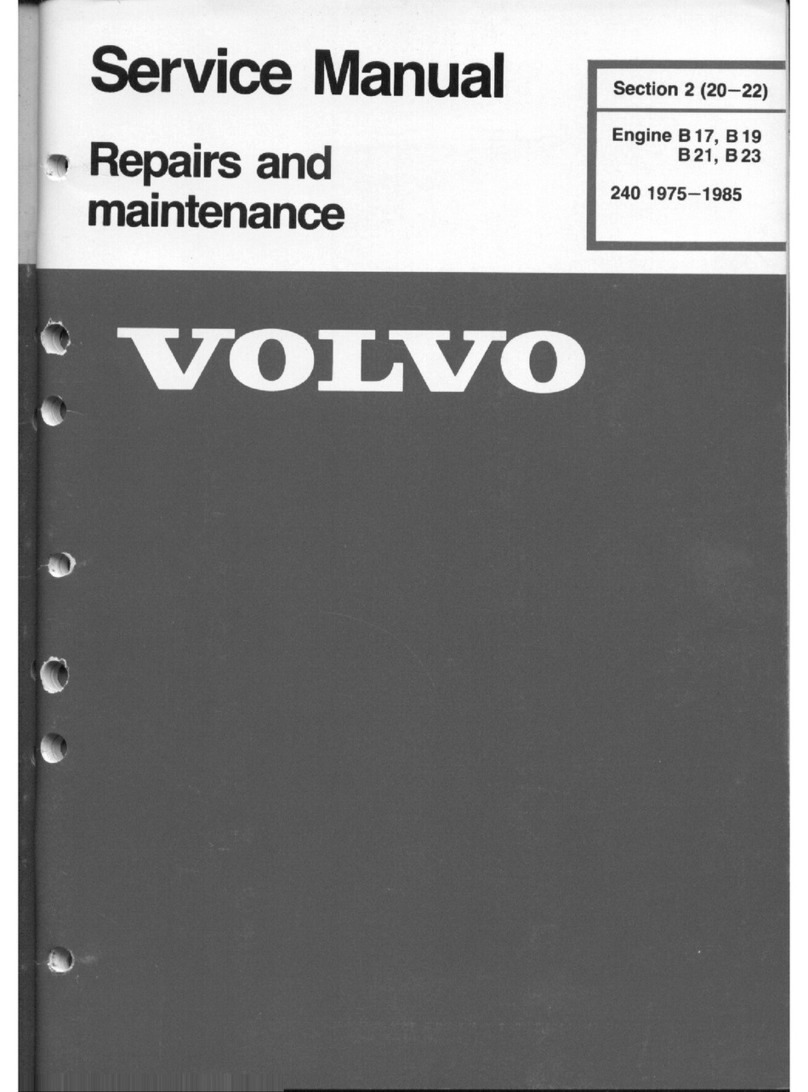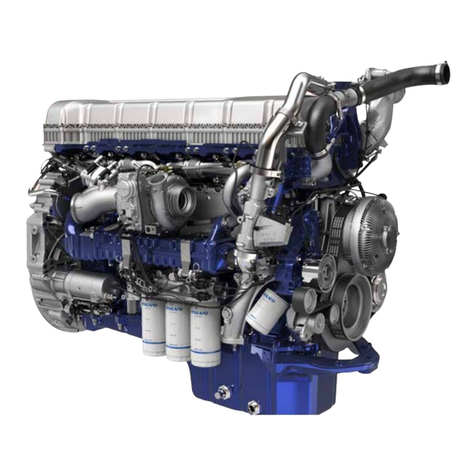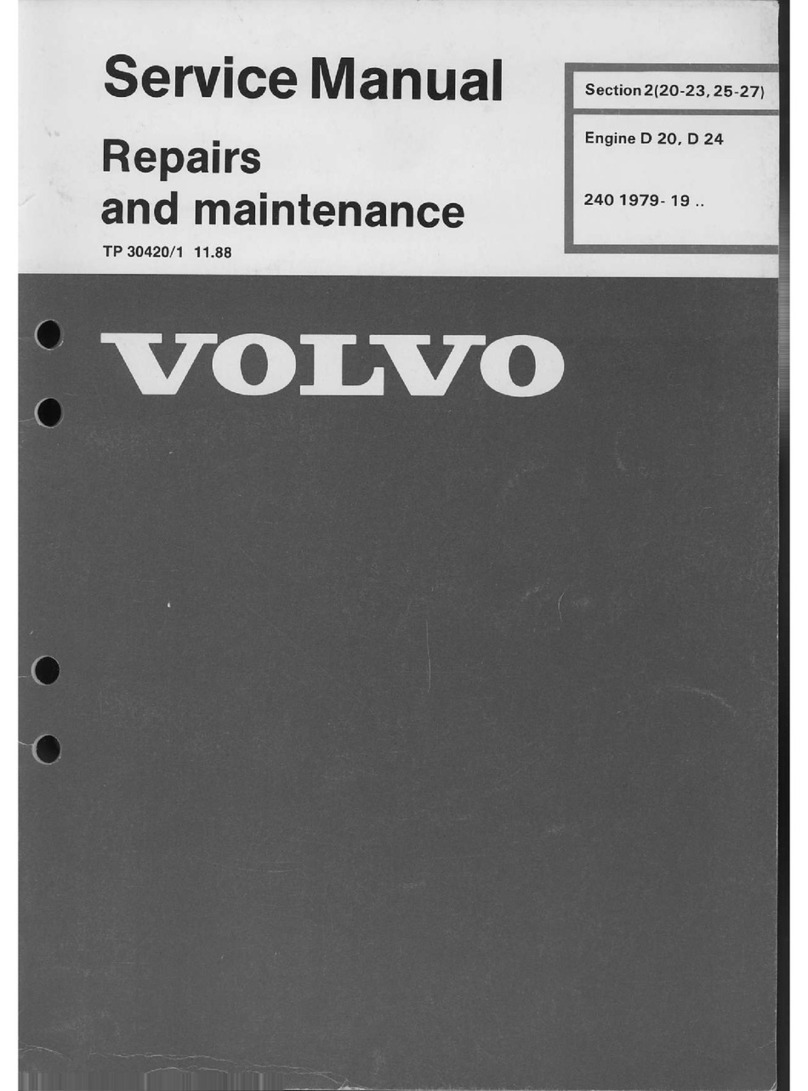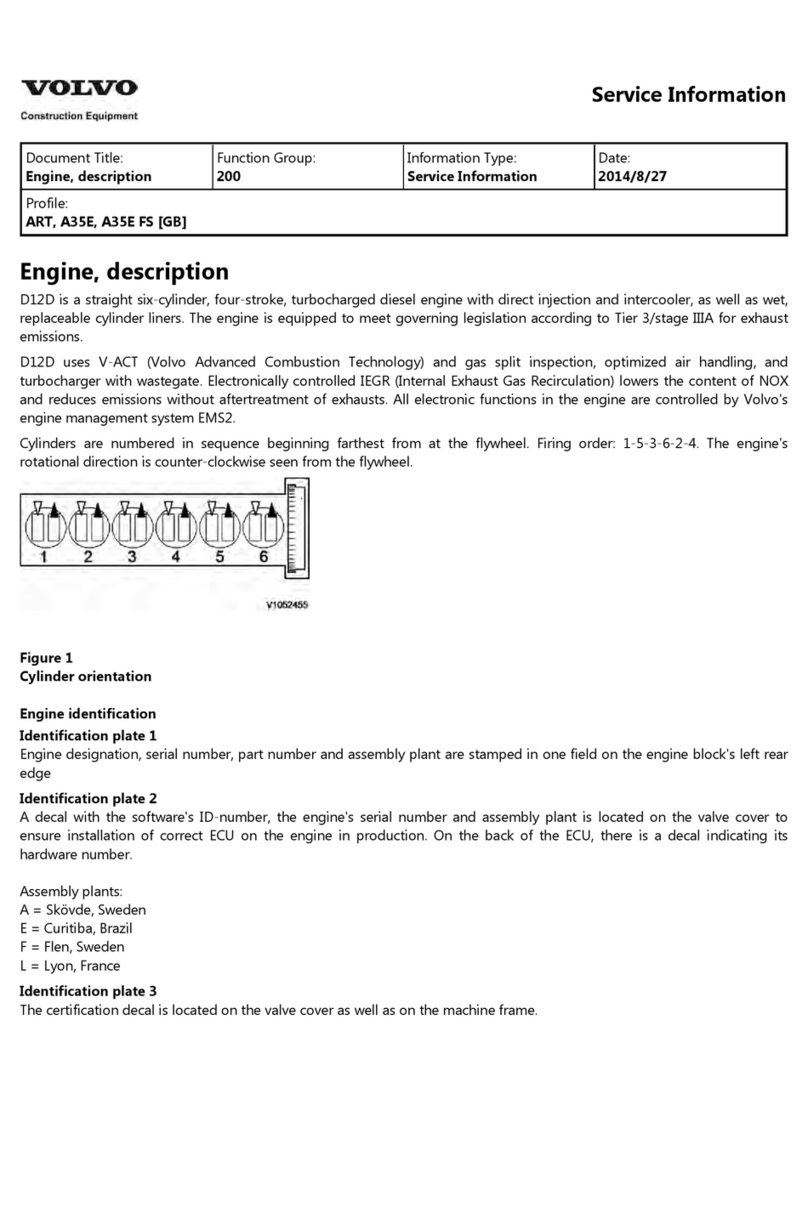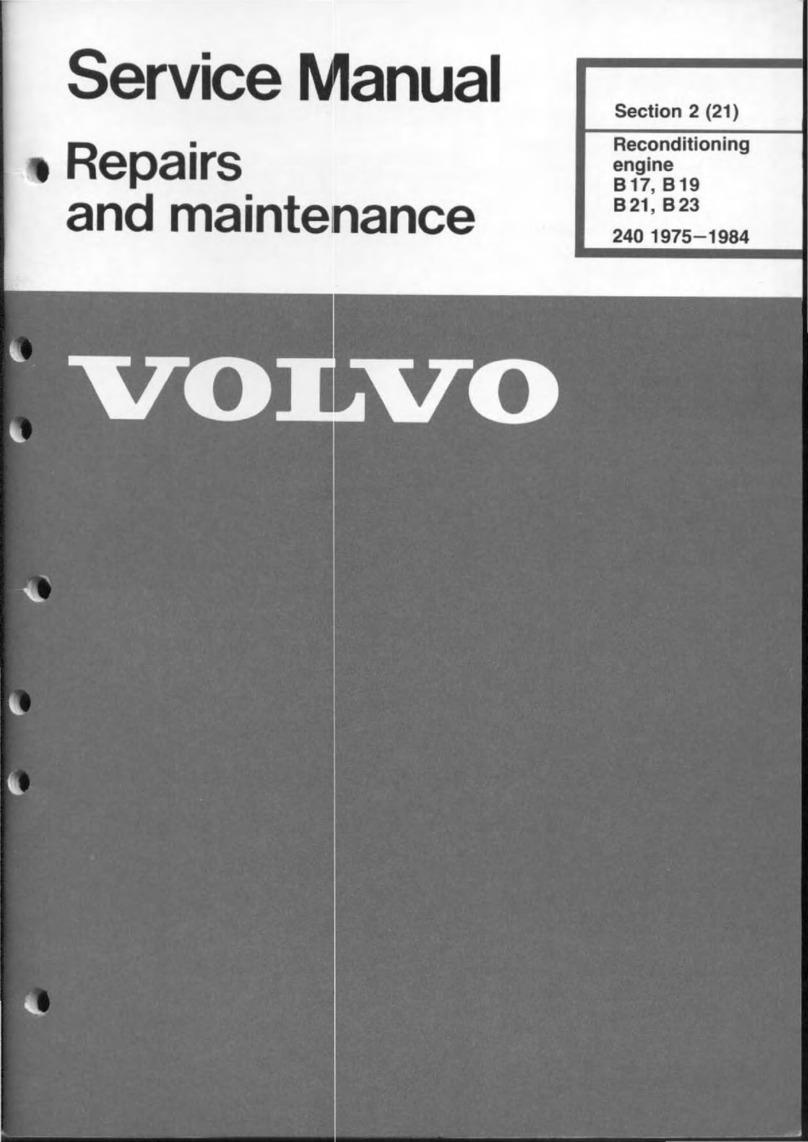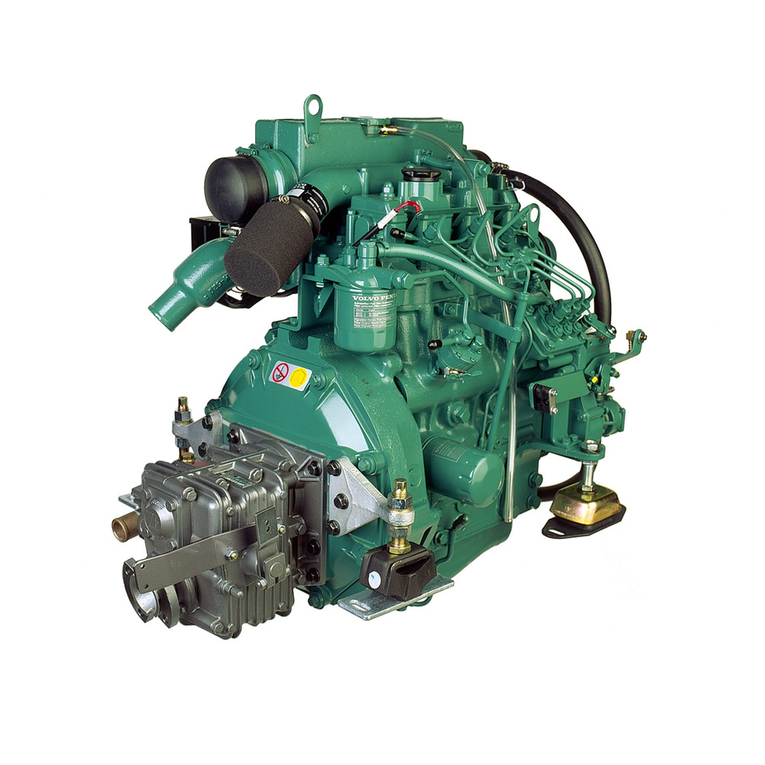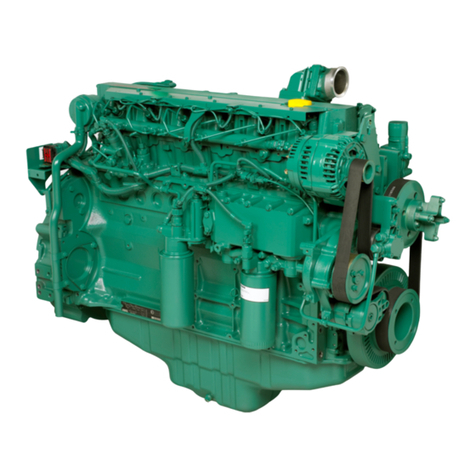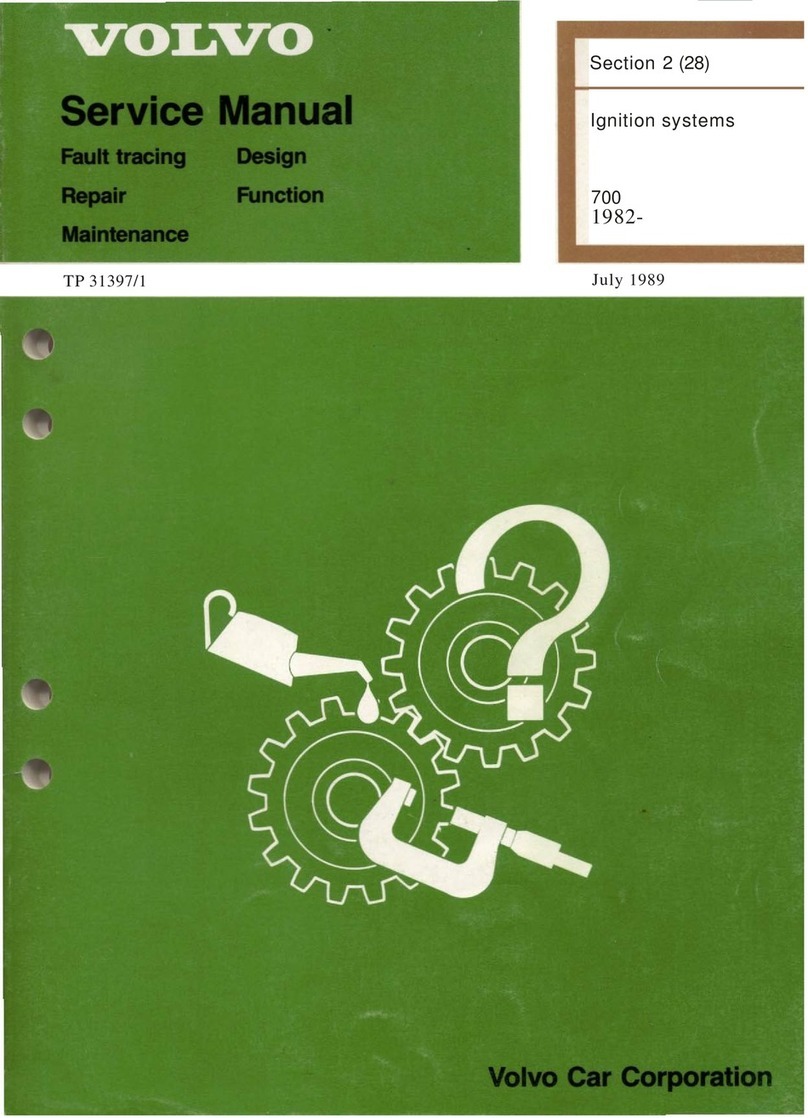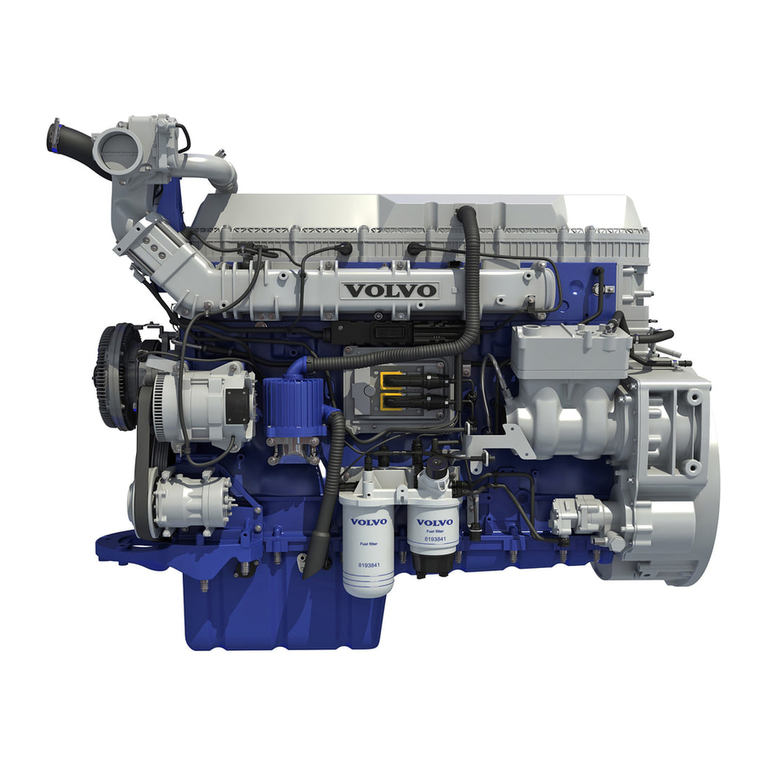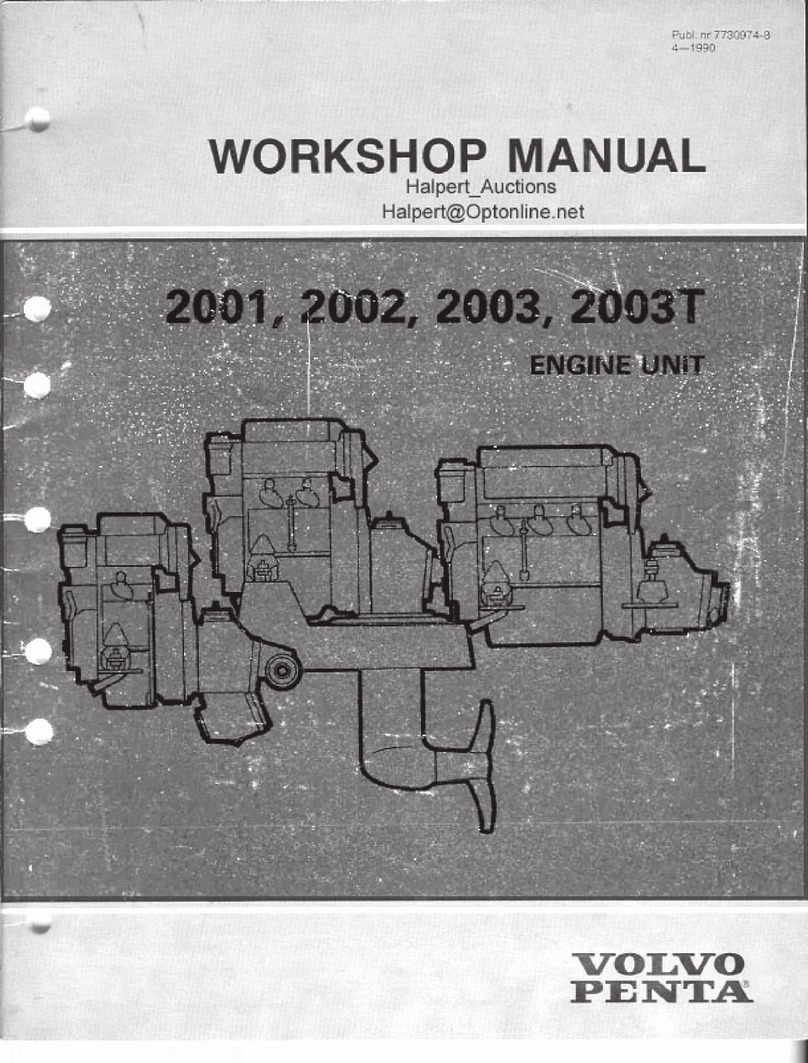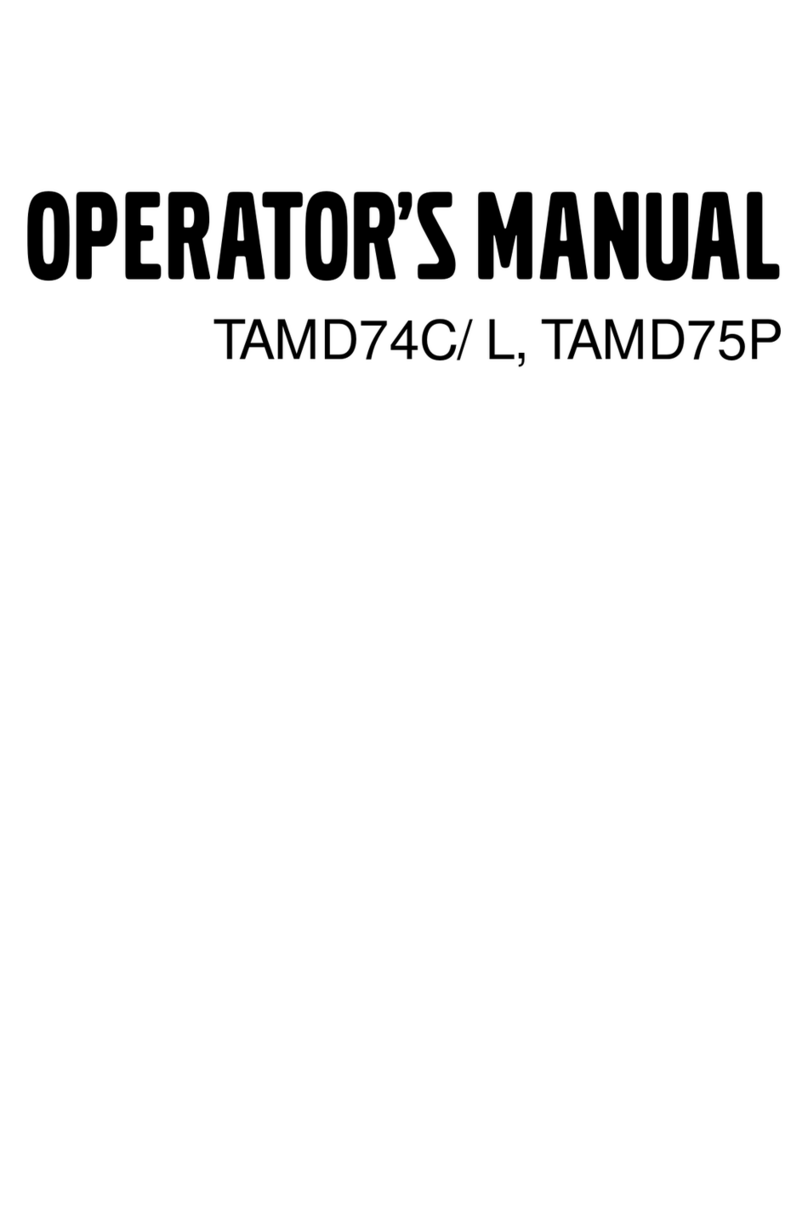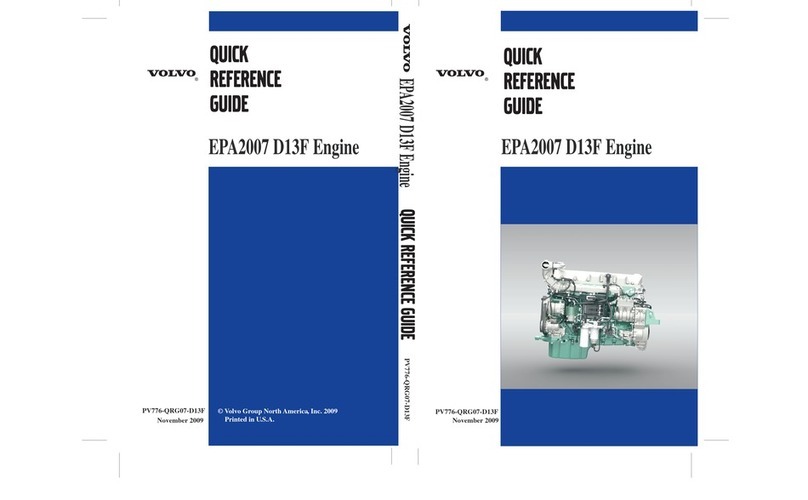Cylinder Head, Camshafts
The engine mounting bracket is located on the cylinder head and secured with 5 bolts that must be
tightened in three stages. See VADIS.
Cooling is more effective due to larger coolant ducts and a more directed flow between the exhaust
ports and around the spark plug wells.
There are ducts for crankcase gases beside each cylinder's intake port.
•
Cylinder head with Continuous Variable Valve Timing (CVVT) only on the intake camshaft.
•
CVVT camshaft angle variation:
- Intake = 50 crankshaft degrees.
Camshaft Housing
•
The camshaft position sensors are integrated into the camshaft housing.
•
The CVVT solenoid has a new location.
•
The oil filler pipe has been moved to the side nearest the CVVT solenoid because of the new intake
manifold.
•
New version of CVVT (Advance and Retard).
Oil Filter /
Oil Trap
The filter and trap are integrated into one unit.
The filter has been moved from the oil pan to the intake side of the engine. This causes less oil spillage
when replacing the filter than on previous engines.
Oil flows from the outside in, through the filter.
To ensure that oil still flows even if the filter is clogged, there is an overflow valve in the cover that
opens at 11 kPa and when starting the vehicle from cold (-20°C to -25°C).
Oil Separation
The oil trap is manufactured in die-cast aluminum and consists of one chamber, 3 cyclonic separators,
1
spring loaded membrane and a plastic cover.
The chamber roughly separates oil and gases.
For further separation the gases are ducted to the cyclones which finely separate the oil from gases.
The cyclones are plastic and cannot be replaced.
The separated oil runs to the bottom of the cyclones and on to the oil pan.
The crankcase gases go up to a spring-loaded membrane that opens at a pressure of -5 kPa to
+3 kPa.
When the gases have passed the membrane they travel via a hose to the intake manifold and then to
the intake gasket which has calibrated holes for each cylinder. This improves the distribution of the
crankcase gases.
Spark Plugs
To reduce carbon deposits when starting the vehicle from cold, the ceramic is thinner at the tip of the
spark plug. This is called Quick Heat.
The spark plugs have a longer thread = 26.5 mm (previously 19.0 mm).
The spark plugs have three electrodes.
The tightening torque is 28 N
•m
(+l- 3 N
•m
).

